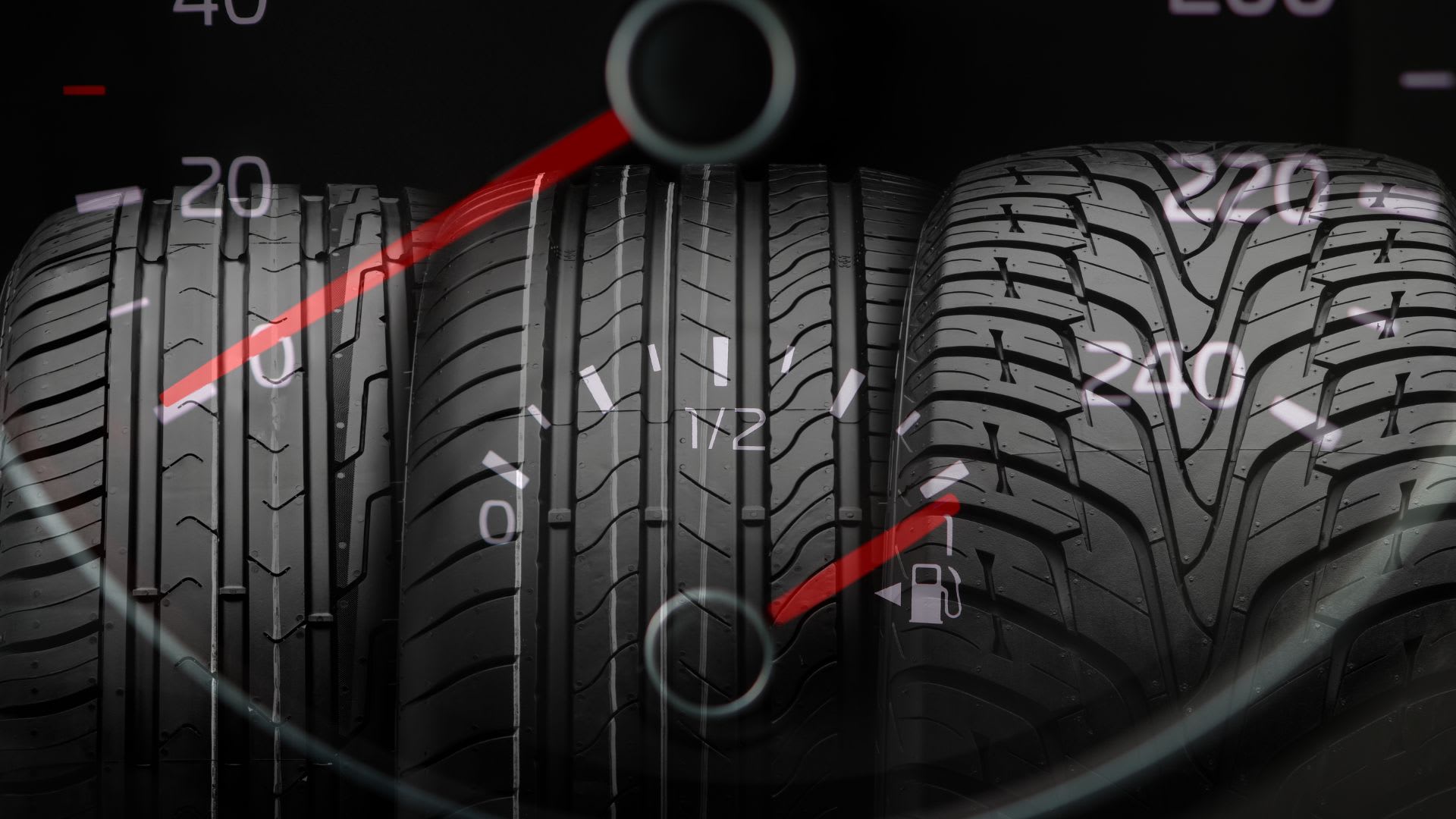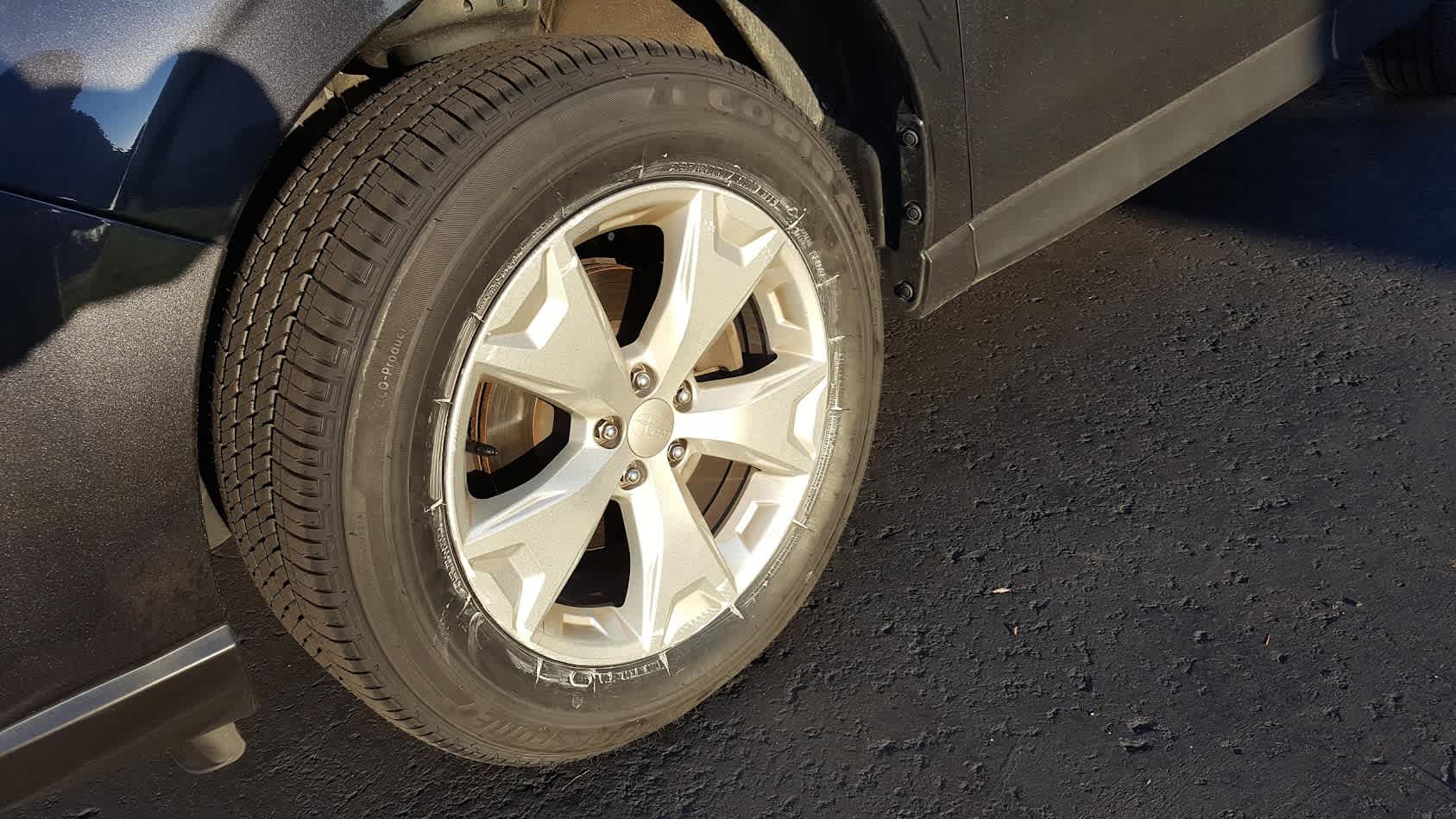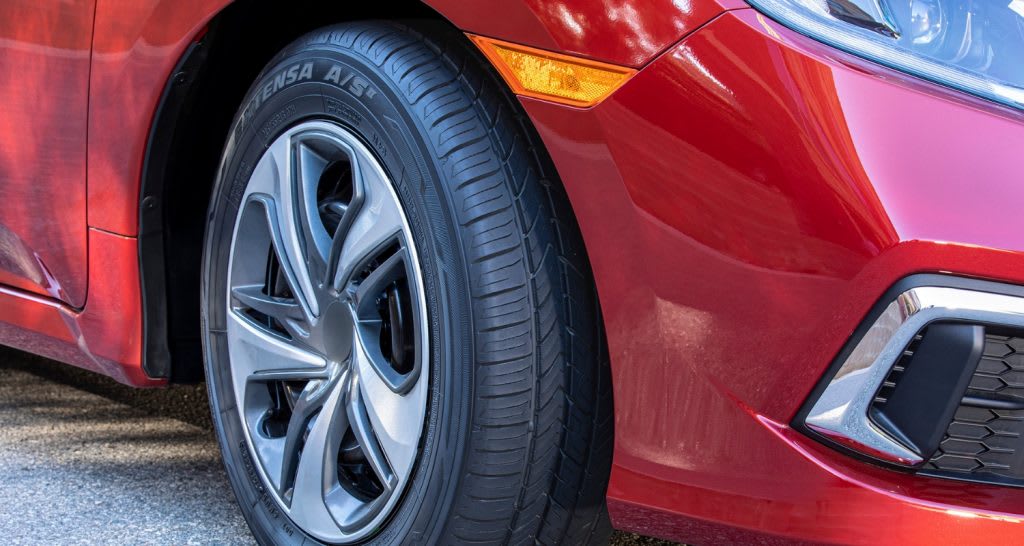Tire Maintenance & Safety
Free shipping
Best price guarantee
Special pricing
Financing with Resolve
Easy returns

With gas prices on the rise, maximizing fuel efficiency has become a top priority for drivers everywhere. While there are many factors that contribute to fuel economy, one often overlooked aspect is tire selection and maintenance. The right set of tires, coupled with proper care, can significantly impact your vehicle's gas mileage, saving you money at the pump and reducing your environmental footprint.
Tires play a crucial role in how efficiently your vehicle moves, as they are the only point of contact between your car and the road. From rolling resistance to tread design, understanding how tires affect fuel consumption is key to making informed choices when it comes to tire selection and upkeep. By taking a few simple steps, you can unlock the full potential of your vehicle's fuel efficiency and enjoy a smoother, more cost-effective ride.
In this article, we'll explore the concept of maximizing fuel efficiency with your tires and provide practical tips on how to choose and maintain tires that contribute to better gas mileage. Whether you're in the market for new tires or looking to optimize your current set, these insights will help you make the most of every mile and every gallon.
What is Maximizing Fuel Efficiency with Your Tires?

Maximizing fuel efficiency with your tires involves selecting and maintaining tires that help your vehicle consume less fuel, ultimately saving you money at the gas station. The right set of tires can significantly impact your vehicle's performance, reducing rolling resistance, improving traction, and ensuring proper inflation—all of which contribute to better gas mileage.
When tires are designed with fuel efficiency in mind, they incorporate advanced materials and tread patterns that minimize energy loss as the tire rolls, requiring less effort from your engine to propel the vehicle forward. This reduction in rolling resistance translates to improved fuel economy, as your car doesn't have to work as hard to maintain speed.
Moreover, properly inflated tires are essential for optimal fuel efficiency. Underinflated tires create more rolling resistance, causing your engine to consume more fuel to compensate for the increased drag. By regularly checking and maintaining the recommended tire pressure, you can ensure that your tires are operating at their most efficient level, maximizing your vehicle's gas mileage.
How to Choose Tires That Boost Fuel Efficiency

- Opt for Low Rolling Resistance Tires: Low rolling resistance tires are engineered to minimize the energy loss as a tire rolls, using advanced materials and tread designs. These tires are an excellent choice for drivers looking to boost their fuel efficiency, as they reduce friction between the tire and the road, resulting in improved gas mileage.
- Maintain Proper Tire Pressure: Proper tire inflation is crucial for maximizing fuel efficiency. Underinflated tires increase rolling resistance, forcing your engine to work harder and consume more fuel. Regularly check your tire pressure and ensure it matches the manufacturer's recommendations to enjoy noticeable fuel savings.
- Choose the Right Tire Size and Weight: The size and weight of your tires can impact fuel efficiency. Larger, heavier tires require more energy to rotate, reducing gas mileage. Opt for tires that match your vehicle's specifications to maintain optimal fuel economy. Retailers like SimpleTire offer a wide selection of tires tailored to your vehicle's make and model, making it easy to find the perfect fit.
- Consider Tread Design: Tire tread design affects traction and rolling resistance. Well-designed treads can optimize grip while minimizing resistance, enhancing fuel efficiency. Avoid overly aggressive or worn-out treads that can increase rolling resistance and reduce fuel economy.
Tips on Improving Fuel Efficiency with Your Tires

- Regularly Check and Adjust Tire Pressure: Maintaining proper tire pressure is one of the simplest and most effective ways to improve fuel efficiency. Check your tire pressure at least once a month and before long trips, using a reliable tire pressure gauge. Adjust the pressure to the manufacturer's recommended levels, which can be found in your vehicle's owner's manual or on a sticker inside the driver's door jamb.
- Schedule Tire Rotations and Alignments: Regular tire rotations and alignments help prevent uneven wear, which can increase rolling resistance and reduce fuel efficiency. Rotating your tires every 5,000 to 8,000 miles ensures even wear and prolongs tire life. Additionally, having your vehicle's alignment checked and adjusted as needed helps maintain proper tire contact with the road, optimizing fuel economy.
- Keep Your Tires Properly Maintained: Proper tire maintenance goes beyond just checking pressure and rotating tires. Inspect your tires regularly for signs of damage, such as cuts, punctures, or bulges, and have them repaired or replaced as necessary. Also, monitor your tread depth—tires with insufficient tread can reduce traction and fuel efficiency. Use the penny test or a tread depth gauge to ensure your tires have adequate tread remaining.
- Consider Vehicle Load: The weight of your vehicle plays a significant role in fuel efficiency. Avoid carrying unnecessary items in your car, especially heavy ones, as extra weight increases fuel consumption. When using roof racks or cargo boxes, remove them when not in use to reduce wind resistance and improve gas mileage.
By following these tips and choosing tires designed for fuel efficiency, you can maximize your vehicle's gas mileage and save money at the pump. Remember, even small improvements in fuel economy can add up to significant savings over time, making tire selection and maintenance a worthwhile investment in your vehicle's performance and your wallet.
Choosing the right tires for your vehicle is crucial in optimizing fuel efficiency. The materials and construction of tires significantly affect how efficiently a vehicle can travel. Selecting tires with features that enhance efficiency can lead to reduced fuel consumption and cost savings.
Influence of Innovative Tire Technology
The role of innovative technology in tire design is pivotal for improving fuel efficiency. Tires using cutting-edge materials often incorporate silica-based compounds, which enhance traction while minimizing rolling resistance—allowing for smoother movement. These advancements in rubber technology strike a balance between maintaining grip and reducing the energy required to propel the vehicle, ultimately contributing to better gas mileage.
Aerodynamic tread patterns are another key factor. These patterns are crafted to reduce air drag and improve the flow of air around the tire. By minimizing aerodynamic drag, these designs can enhance the vehicle's fuel efficiency without compromising safety or performance.
Alignment of Tire Specifications with Vehicle Needs
Matching tire specifications to your vehicle’s requirements is essential for fuel optimization. Tires with a focus on fuel efficiency often feature lightweight construction to reduce the energy needed for movement. This reduction in weight helps decrease rolling resistance, allowing the engine to operate more efficiently.
Consideration of tire performance ratings also plays a role. Tires should meet the vehicle's specific speed and load requirements without exceeding them unnecessarily, as higher ratings can lead to increased weight and reduced fuel economy. Selecting tires tailored to your vehicle's needs ensures a harmonious balance between performance, safety, and fuel efficiency.
Step 1: Opt for Low Rolling Resistance Tires

Choosing low rolling resistance tires can significantly enhance your vehicle's fuel performance. By utilizing materials and designs that reduce the drag on your tires, these specialized options enable smoother driving. This innovation helps in cutting down the energy your vehicle needs to maintain movement, translating to fewer stops at the pump.
Advantages of Low Rolling Resistance Tires
- Increased Fuel Savings: These tires are crafted to lower the resistance encountered as they roll, which can lead to noticeable fuel savings. By decreasing the engine's workload, they allow for a more efficient use of fuel.
- Eco-Friendly Benefits: Opting for these tires supports environmental sustainability by reducing fuel consumption and, consequently, carbon emissions. This makes them a responsible choice for eco-conscious drivers.
- Long-Lasting Performance: Despite their focus on efficiency, these tires are built to last. The advanced materials used in their production ensure they endure regular driving conditions, providing both durability and efficiency.
Factors to Consider When Choosing Low Rolling Resistance Tires
When selecting these tires, it’s important to consider the typical driving conditions and regional climate. Different brands offer various levels of performance and fuel efficiency benefits, so ensure compatibility with your specific driving needs. Aligning the tire choice with your vehicle's specifications can maximize these benefits, ensuring both performance and fuel efficiency are optimized.
By embracing low rolling resistance tires, you can achieve a marked improvement in fuel economy. This choice supports individual savings and broader initiatives aimed at reducing overall fuel consumption and promoting sustainable driving habits.
Step 2: Maintain Proper Tire Pressure
Ensuring your tires are inflated to the right pressure is essential for achieving maximum efficiency. When tire pressure dips below optimal levels, the tires spread more across the road, leading to increased resistance. This extra drag demands more from your engine and can lead to uneven tire wear, affecting overall vehicle functionality.
Importance of Regular Tire Pressure Monitoring
Consistently monitoring tire pressure is a simple yet impactful measure. By aligning your tire pressure with the specifications outlined by your vehicle’s manufacturer, you can achieve a smooth ride and enhanced fuel efficiency. Utilize a dependable tire pressure gauge for monthly checks and before extended travel—pressure can fluctuate with temperature changes, making regular adjustments crucial, especially during seasonal variations.
- Effect of Weather Changes: Cooler temperatures can lower tire pressure, whereas warmer temperatures can cause overinflation. Adjusting pressure based on these conditions ensures that your tires remain efficient and perform reliably.
Advantages of Correct Tire Inflation
Proper inflation of tires yields benefits beyond just improved fuel efficiency. It ensures even wear across the tire surface, thereby extending the tire's life and maintaining its safety features. This practice also mitigates the risk of tire-related incidents, such as blowouts, which can present safety hazards and incur repair costs.
- Improved Handling and Safety: Correctly inflated tires enhance vehicle handling and stability, offering better performance and control. This is particularly beneficial during sudden maneuvers or inclement weather conditions.
Prioritizing tire pressure maintenance ensures that your vehicle runs efficiently. This straightforward routine not only results in fuel savings but also enhances the safety and durability of your tires.
Step 3: Choose the Right Tire Size and Weight

Selecting tires that are appropriately sized and weighted for your vehicle is essential for optimizing fuel efficiency. The size of the tires influences how your car interacts with the road—larger tires can increase surface contact, which might lead to higher friction and rolling resistance. This additional resistance demands more energy from the engine, thus impacting fuel economy. Ensuring that your tires match your vehicle's recommended specifications is key to maintaining efficient performance.
Evaluating Tire Dimensions and Their Effects
Tire dimensions play a significant role in vehicle dynamics. Wider tires can enhance road grip and stability but often at the expense of increased drag. This drag requires more power from the engine, which can lead to greater fuel consumption. Conversely, narrower tires may reduce this drag but might not provide the desired traction in various driving conditions.
- Width and Sidewall Ratio: The width of a tire and its sidewall height can affect its interaction with the road. A balanced approach in selecting these dimensions, based on manufacturer guidelines, ensures optimal efficiency and handling without compromising safety.
Importance of Tire Weight in Fuel Efficiency
The weight of a tire contributes to its rotational mass, directly affecting fuel consumption. Lighter tires reduce the energy needed to initiate and sustain movement, promoting better fuel efficiency. Opting for tires made with advanced, lightweight materials can achieve the desired performance without unnecessary weight.
- Innovative Materials: Modern tire technology utilizes materials that offer strength and durability without excessive weight. These innovations support efficient driving by reducing the engine's workload, contributing to improved fuel economy.
By choosing tires that fit your vehicle’s specifications, you ensure that size and weight are aligned with efficiency goals. This careful selection maximizes performance while minimizing fuel usage, fostering a more eco-friendly and cost-effective driving experience.
Step 4: Consider Tread Design

The configuration of tire tread is integral to achieving a balance between traction and efficient fuel use. The arrangement and depth of the tread dictate how effectively tires can maintain road contact while minimizing energy expenditure. Advanced tread designs prioritize smooth interaction with the road surface, aiding in maintaining momentum with reduced fuel consumption.
Essential Elements of Tread Configuration
When assessing tread design, prioritize patterns that seamlessly integrate smooth operation with dependable grip. Modern designs often feature sipes and grooves to enhance water dispersion, which prevents hydroplaning and supports efficient travel. These features are crucial for sustaining traction without increasing road friction.
- Directional and Multi-Directional Patterns: Directional tread patterns are engineered for optimal performance in specific conditions, such as wet weather, by channeling water efficiently. Multi-directional patterns cater to varied driving environments, providing a balanced grip and efficiency across diverse surfaces.
Influence of Tread Condition on Performance
The condition of the tread significantly influences how tires perform on different surfaces. As tread depth decreases, the tire's ability to maintain efficient water evacuation and consistent traction diminishes, potentially increasing energy demands. Regular inspection of tread depth ensures that tires stay effective, promoting both safety and fuel savings.
- Built-In Wear Indicators: These markers within the tire's tread help identify when a replacement is necessary. Monitoring these indicators helps avoid increased energy use due to compromised tread, ensuring continued efficiency and safety.
By selecting tires with a thoughtfully crafted tread design, you ensure that your vehicle remains efficient while delivering necessary traction for a variety of driving conditions. This focus on tread design not only aids in fuel conservation but also enhances the overall driving experience by providing a stable, efficient ride.
Step 5: Regular Tire Maintenance
Regular tire maintenance plays a crucial role in keeping your vehicle running efficiently and conserving fuel. Consistent upkeep of tires contributes to even wear, minimizing the chances of increased rolling resistance that can negatively impact fuel economy. Key maintenance practices, such as checking wheel balance and ensuring proper tire inflation, are vital in maintaining the longevity of your tires, thus supporting an efficient driving experience.
Importance of Balance and Inflation
Maintaining proper wheel balance ensures a smooth ride and optimal tire performance. Balanced wheels reduce vibrations and uneven wear, enhancing both handling and fuel efficiency. Proper tire inflation, another critical factor, helps sustain the correct contact patch with the road, reducing unnecessary resistance and fuel consumption.
- Wheel Balancing: Regular balancing of your wheels helps prevent vibration and irregular wear patterns, ensuring that tires roll smoothly and efficiently. This practice contributes to a more comfortable ride and improved fuel economy.
- Correct Inflation: Ensuring tires are inflated to the manufacturer’s specified pressure helps maintain an optimal contact area with the road, decreasing rolling resistance and promoting better gas mileage.
Additional Maintenance Practices
Beyond balancing and inflation, other maintenance actions are essential for tire performance. Regularly monitoring tread depth and inspecting for signs of damage can address issues that might affect fuel efficiency. Additionally, ensuring that tire treads are free from foreign objects or excessive debris helps maintain optimal performance.
- Tread Depth Monitoring: Checking tread depth regularly ensures that tires have adequate grip and perform efficiently in various conditions. Using a tread depth gauge can help determine when tires need replacement to maintain safety and efficiency.
- Debris and Object Removal: Keeping tire treads clear of stones or debris prevents potential damage and ensures smoother tire operation. This practice helps maintain traction and fuel efficiency by allowing tires to perform optimally.
Incorporating these maintenance practices into your vehicle care routine ensures that your tires contribute to better fuel efficiency. By focusing on balance, inflation, and regular inspections, you can enjoy a safer and more economical driving experience.
Tips on Improving Fuel Efficiency with Your Tires

Enhancing your vehicle's fuel efficiency involves strategic tire care and management. By adopting certain practices, you can effectively reduce fuel consumption while maintaining optimal tire performance. Integrating these strategies into your routine ensures you get the most out of every drive.
1. Regularly Check and Adjust Tire Pressure to Recommended Levels
Regular monitoring of your tire pressure is crucial to ensure road grip and efficiency. Utilize a high-quality gauge to verify pressure levels, aligning them with the vehicle's specified requirements. This proactive measure helps maintain the tires' function and contributes to fuel conservation.
2. Schedule Tire Rotations and Alignments to Prevent Uneven Wear
Frequent tire rotations facilitate uniform wear, which is essential for maintaining smooth handling and efficient fuel use. Schedule rotations in accordance with your vehicle’s maintenance guide to keep wear even. Proper alignment is also necessary to ensure that tires meet the road at the correct angle, minimizing fuel loss due to misalignment.
3. Choose Tires Designed for Low Rolling Resistance to Maximize Fuel Savings
Select tires that focus on reducing the effort required for movement. These tires are crafted with materials that lower friction, allowing for smoother travel and better fuel economy. Opt for these designs to support a more economical driving experience.
4. Keep Your Tires Properly Maintained to Ensure They Perform Efficiently
Conduct regular checks to spot and resolve any potential tire issues before they impact efficiency. Observing tread condition and looking out for any irregularities ensures the tires function as intended. This vigilance keeps performance steady and supports fuel efficiency.
5. Consider Vehicle Load and Avoid Unnecessary Weight to Enhance Fuel Efficiency
The mass your vehicle carries influences fuel usage. Lighten your vehicle by removing non-essential items, especially those that add significant weight. This step helps decrease the effort needed by the engine, aiding in better fuel efficiency.
By selecting the right tires and maintaining them properly, you can unlock the full potential of your vehicle's fuel efficiency. At SimpleTire, we are committed to helping you find the perfect tires that align with your efficiency goals and driving needs. Shop for tires online with us and discover the best deals on tires that will keep you rolling smoothly while saving you money at the pump.
Ready to find the perfect tires?
Search By